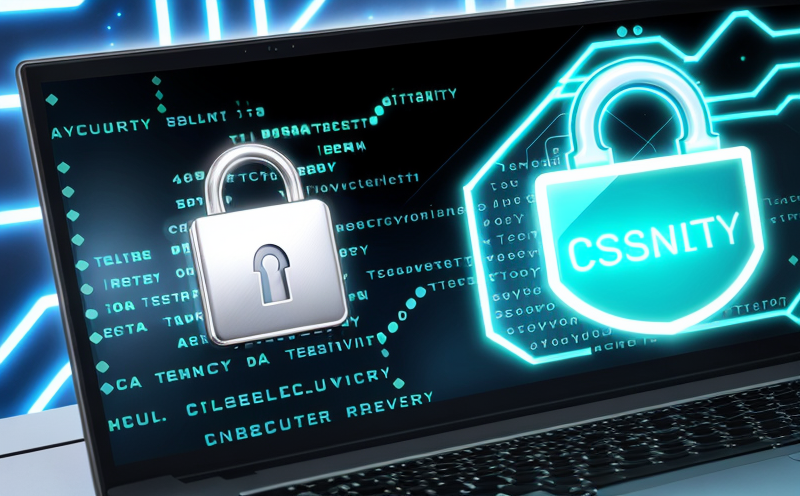IEC 62443-4-1 Secure Development Lifecycle Testing for IoT
The International Electrotechnical Commission (IEC) standard IEC 62443-4-1 is a crucial framework for securing the development of smart home and IoT devices against cyber threats. This standard provides guidelines on how to design, develop, and implement secure software systems that are integral to modern IoT ecosystems. Compliance with this standard ensures that your products meet high security standards, thereby protecting end-users from potential vulnerabilities.
The Secure Development Lifecycle (SDL) is a structured process for creating secure software by integrating security measures into the development cycle itself. IEC 62443-4-1 focuses specifically on the SDL phase of the software life cycle where security requirements are identified and integrated early in the design process. This involves:
- Conducting threat modeling to identify potential risks.
- Implementing secure coding practices throughout development.
- Performing regular security audits and assessments.
The standard emphasizes proactive measures rather than reactive ones, ensuring that security is a core component of the product. This not only enhances user trust but also minimizes the risk of costly data breaches or other cyber incidents.
In practice, this means that during the development phase, developers must adhere to strict coding practices and use secure libraries. They should conduct regular code reviews and implement continuous integration and deployment (CI/CD) pipelines with security gateways. The testing process involves simulating various attack vectors against the software to identify and fix vulnerabilities before the product reaches the market.
For quality managers and compliance officers, this standard provides a roadmap for ensuring that their products meet global cybersecurity standards. For R&D engineers, it offers a framework for integrating security into every aspect of the development process. By following these guidelines, they can build products that are not only functional but also secure against emerging threats.
Compliance with IEC 62443-4-1 is increasingly becoming a requirement in various industries due to growing concerns over data privacy and cyber security. In sectors like healthcare, energy, and transportation, where IoT devices play critical roles, adherence to this standard ensures that these systems are resilient against attacks.
Quality and Reliability Assurance
The quality and reliability assurance of smart home and IoT devices is paramount in ensuring customer satisfaction. When implementing IEC 62443-4-1 Secure Development Lifecycle Testing, we focus on several key areas to ensure the highest standards of security:
- Threat Modeling: Identifying potential threats early in the development process helps in designing systems that are robust against attacks.
- Secure Coding Practices: Ensuring that all code adheres to secure coding guidelines prevents common vulnerabilities like SQL injection and cross-site scripting (XSS).
- Security Audits: Regular audits help identify and mitigate risks before they become significant issues.
The testing process involves a comprehensive approach, including static and dynamic analysis of the code. Static analysis checks for potential vulnerabilities in the source code without executing it, while dynamic analysis examines the software in real-time operation to detect runtime errors or exploitable flaws.
Our state-of-the-art laboratories use cutting-edge tools and methodologies to ensure that every aspect of the development process is scrutinized under rigorous conditions. This includes simulating various attack scenarios to test the resilience of the system against unauthorized access, data breaches, and other cyber threats.
The end result is a product that not only functions reliably but also provides peace of mind for users regarding their security. Quality managers can rest assured knowing that our testing aligns with international standards, ensuring compliance and trustworthiness.
Customer Impact and Satisfaction
The implementation of IEC 62443-4-1 Secure Development Lifecycle Testing significantly impacts customer satisfaction by addressing their primary concerns: security and data privacy. By ensuring that smart home and IoT devices are developed according to this standard, we provide customers with products that:
- Are resilient against cyber attacks.
- Protect sensitive information from unauthorized access.
- Minimize the risk of data breaches.
This not only enhances user trust but also builds a positive brand image. Customers are more likely to choose products that they know are secure, which can lead to increased sales and customer loyalty. In sectors like healthcare, where patient data is highly sensitive, this standard becomes even more critical, ensuring compliance with regulatory requirements.
For quality managers, this means that every product released meets the highest security standards, reducing the risk of recalls or returns due to security breaches. This can save significant costs and time in the long run by preventing costly repairs and replacements.
The testing process is not just about identifying vulnerabilities; it’s also about providing solutions to mitigate them effectively. By adhering to this standard, we ensure that our customers receive products that are as secure as they need to be, enhancing overall satisfaction and loyalty.
Environmental and Sustainability Contributions
The implementation of IEC 62443-4-1 Secure Development Lifecycle Testing has several indirect environmental and sustainability contributions. By ensuring the security of smart home and IoT devices, we contribute to a more sustainable future in several ways:
- Reduction in Device Failures: Secure development reduces the likelihood of device failures, which in turn decreases the need for frequent replacements.
- Energy Efficiency: Securely developed systems are less prone to cyber attacks that could disrupt operations or lead to inefficient use of resources.
- Data Privacy Protection: By protecting sensitive data, we reduce the risk of data breaches and associated costs, which can help in conserving resources used for recovery efforts.
The standard also promotes responsible disposal practices by ensuring that secure devices are easier to recycle or repurpose at the end of their lifecycle. This helps minimize electronic waste and reduces the environmental footprint associated with manufacturing new products.
By adhering to this standard, we contribute to a more sustainable future by ensuring that smart home and IoT devices are not only secure but also environmentally friendly. This aligns with broader sustainability goals in sectors like energy management and resource conservation.





